A Complete and Concise Guide to Wireless Mesh Networks

A Wireless Mesh Network (WMN) is a network where all (or most) devices are connected to each other. Essentially, each device (cell phone, traffic light, laptop, car, sensor etc.) in a mesh network serves as a mini-cell tower or router, wirelessly routing and repeating signals received.
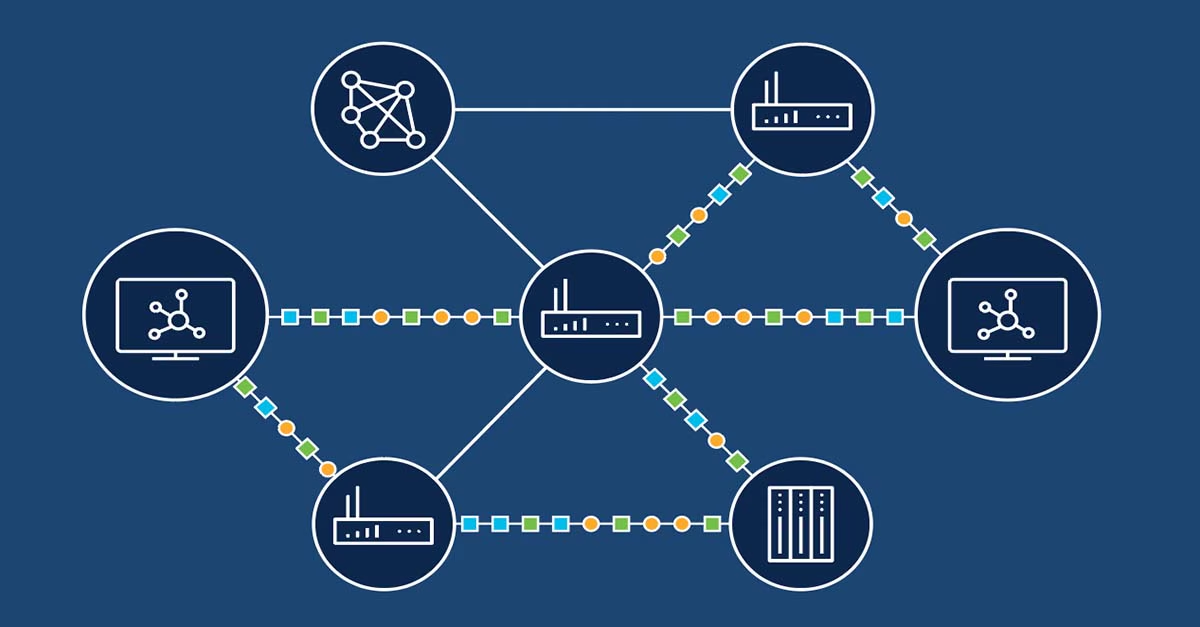
WMNs have been adopted because they are a cost-effective and highly reliable coverage solution. They have the ability to self-configure and self-organize. Thus, they maintain high reliability. They can use alternate pathways and channels to overcome interference.
Mesh-like networks are widely used in applications such as emergency and military operations, Voice over IP (VoIP) protocols, and Internet of Things (IoT) solutions. They are also key to unlocking future value chains in cutting-edge industries like Industrial Internet of Things (IIoT).
Through the use of Wireless Sensor Networks (WSNs), real-world data can be gathered in IIoT settings to drive higher efficiencies and streamline business practices. IIoT applications often use WMNs to monitor machinery, track inventory, and ensure safety.
However, with so many protocols and technologies, understanding the entire WMN landscape can be confusing. This article aims to clarify the WMN landscape.
WMN Architectures
The main architectures used by mesh networks are Infrastructure Mesh, Client Mesh, and Hybrid Mesh. Each is better suited to specific environments and use cases.
1. Infrastructure Mesh
In an Infrastructure Mesh, mesh routers are connected to each other, while client devices (e.g., phones, computers, IoT sensors) are passive. This means they are connected to the routers but do not forward data.
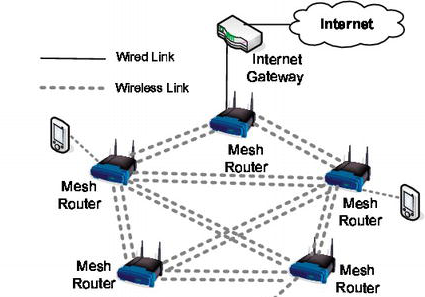
- Pros:
Scalable, reliable, and centralized management. - Cons:
High initial cost and clients are passive.
2. Client Mesh
In a Client Mesh, client nodes are connected in a peer-to-peer configuration and can route data to each other. Each node can act as a routing node to forward data.

- Pros:
Flexible, resilient, and low deployment costs. - Cons:
Power constraints and lower performance under heavy load.
3. Hybrid Mesh
A Hybrid Mesh combines elements of both infrastructure and client WMNs. Fixed nodes provide a stable backbone, while client devices can dynamically extend or enhance the network by relaying traffic.
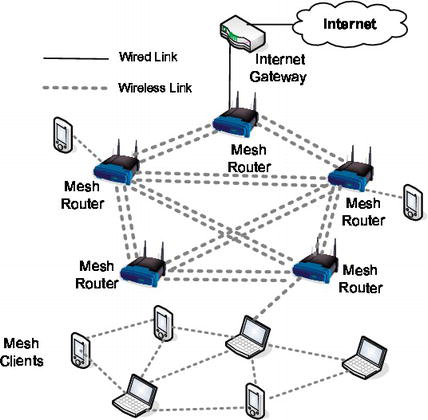
- Pros:
Flexibility with stability and improved scalability. - Cons:
Complex management and interoperability challenges.
Other mesh architectures are typically subcategories of these main architectures. Some important ones include:
- Mobile Ad-hoc Mesh Networks
- Internet of Things (IoT) Mesh Networks
- Space-Based Mesh Networks
Additionally mesh networks topology can either be fully connected or partially connected .
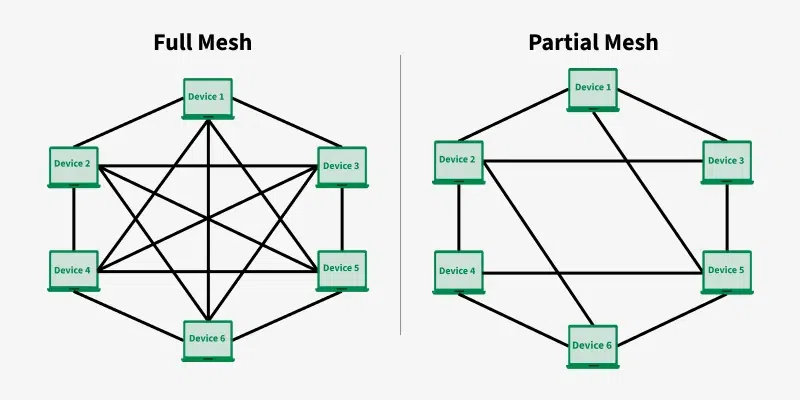
WMN Protocols
There are two categories of WMN protocols: Reactive and Proactive.
- Reactive protocols: Nodes are not aware of the network topology. A routing table is constructed on-demand.
- Proactive protocols: All nodes know how to reach other nodes. Each node has a routing table containing the entire network topology.
Some protocols implement features from both reactive and proactive protocols, resulting in Hybrid protocols.
Protocols in Common WMN Use Cases
1. Smart Home Automation (IoT)
For smart home automation, WMNs focus on low-power, reliable, and secure communications between devices.
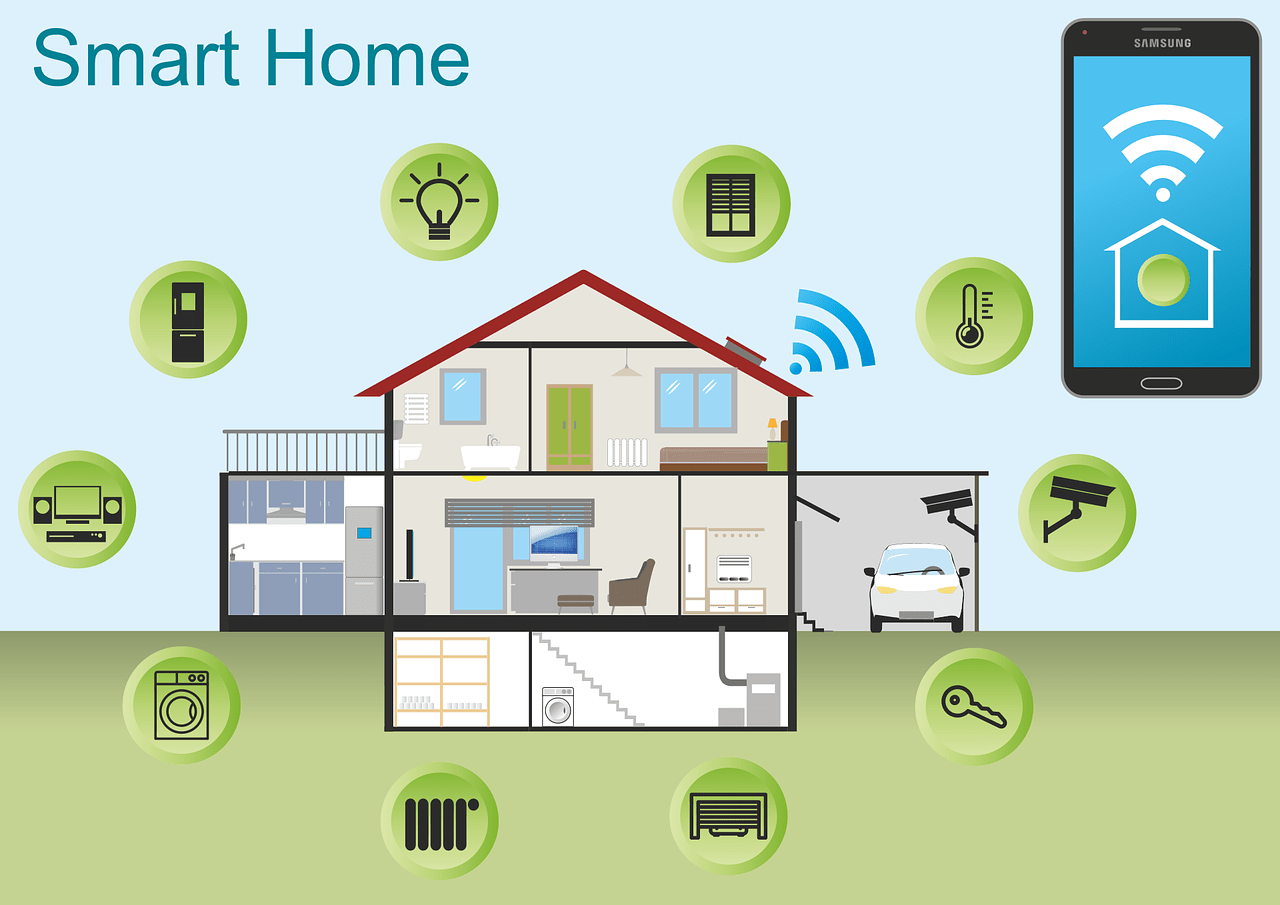
- Zigbee: Low-power, mesh-based protocol providing robust communication for smart home devices like lights and sensors.
- Thread: IP-based mesh protocol that is secure and scalable.
- Bluetooth Mesh: Low-power, scalable mesh network for home automation, providing reliable communication over short to medium distances.
2. Industrial IoT (IIoT) and Automation
In IIoT, WMNs must support high reliability, scalability, and real-time communication for asset tracking, environmental monitoring, and automation.

- Zigbee: Reliable and suitable for industrial sensors and monitoring systems.
- Thread: Ideal for industrial automation and asset management.
- 6LoWPAN: IPv6 over low-power wireless personal area networks, enabling seamless integration of industrial IoT devices into a larger network.
3. Emergency Networks
In emergency situations, WMNs need to provide resilient, decentralized, and long-range communication.
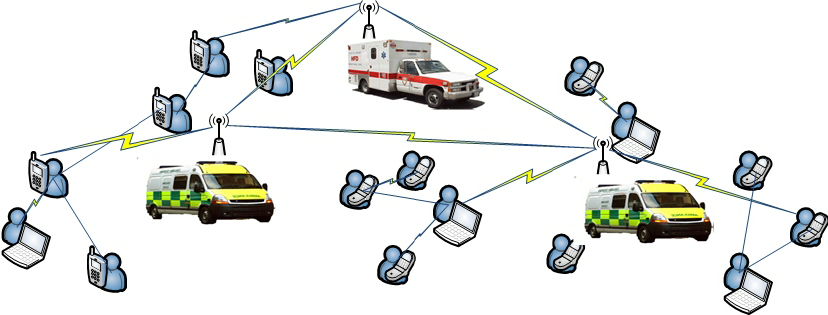
- BATMAN, OLSR: Self-healing, decentralized, and dynamic protocols, ideal for post-disaster recovery and emergency communication where centralized infrastructure is down.
- Zigbee: For basic communication and sensor networks.
- Wi-Fi Mesh (IEEE 802.11s): Offers high data throughput with self-healing capabilities, useful for temporary emergency communication networks in localized areas.
4. Urban Wireless Networks
In urban environments, WMNs need to handle large amounts of traffic and provide wireless internet access to densely populated areas.

- Wi-Fi Mesh (IEEE 802.11s): Extends Wi-Fi coverage across a wide area with multiple access points, providing high-speed internet for urban environments.
- 5G Mesh Networks: High-capacity, low-latency, mesh-based network using 5G technology to enable seamless communication and IoT connectivity in smart cities.
- LoRaWAN (with mesh support): A low-power, long-range network with mesh capabilities for urban IoT applications.
5. Rural Area Connectivity
In rural areas, WMNs are used to provide affordable, reliable, and wide-area coverage, ensuring connectivity in areas with limited infrastructure.
- Wi-Fi Mesh (IEEE 802.11s): Extends wireless internet coverage over long distances in rural areas.
- LoRaWAN: A low-power, long-range wireless technology suitable for rural IoT applications.
Conclusion
I hope this article has clarified the mesh networking landscape and made selecting the correct Wireless Mesh Network technology easier based on your needs.
Subscribe to my newsletter to stay updated on more articles and research!
